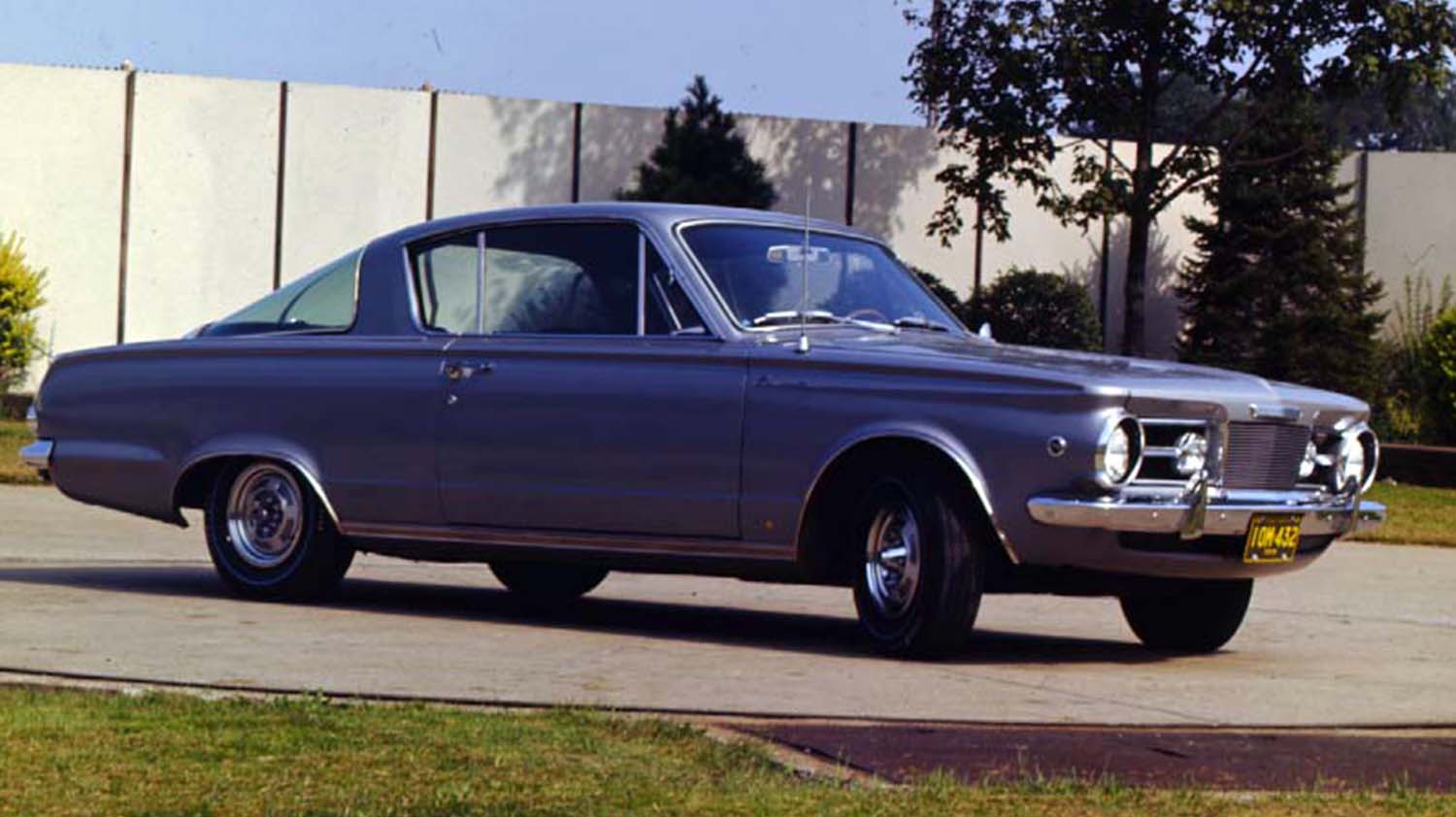
The 1965 Plymouth Barracuda didn’t just appear, it arrived with intent. It was Plymouth’s bold response to a rapidly changing market and the start of an entirely new automotive segment. As the pony car wave gathered momentum, the Barracuda stood as Chrysler’s fastback pioneer, setting the stage for a fierce era of style and performance competition.
The Early Days of the Pony Car Movement
When Ford introduced the Mustang in April 1964, it redefined what a compact performance car could be. Plymouth didn’t sit idle. Just weeks earlier, in April 1964, the Barracuda hit showrooms, technically beating the Mustang to market. Built on the Valiant platform, it wasn’t a full-fledged sports car but rather a stylish reinterpretation of a practical compact.
The 1965 model continued that momentum with small updates, most notably a redesigned grille and new engine options. By now, the Barracuda had become more than an experimental fastback; it was Plymouth’s statement of intent.
Distinctive Design and Purpose
The most recognizable feature of the 1965 Plymouth Barracuda was its massive rear window, a single-piece curved glass panel that covered almost the entire fastback. It wasn’t just an aesthetic choice; it became a design signature. The car’s long roofline, sloping tail, and sporty proportions hinted at speed even when parked.
Inside, it remained true to its Valiant roots with a simple but functional layout. Options such as bucket seats, a floor-mounted shifter, and woodgrain trim helped add a performance flair. It wasn’t extravagant, but it carried a sense of American ingenuity, affordable, unique, and confident.
Power and Performance
Under the hood, the 1965 Plymouth Barracuda offered several choices. The base model came with a 225-cubic-inch Slant-Six engine producing around 145 horsepower, known for its reliability more than raw power. But for those who wanted more excitement, Plymouth offered the 273-cubic-inch Commando V8. With a four-barrel carburetor, it delivered 235 horsepower, enough to transform the compact fastback into a capable street performer.
The lightweight body and rear-wheel-drive layout made it nimble for its time. Paired with either a three-speed manual or TorqueFlite automatic transmission, the V8-equipped Barracuda provided an engaging drive that balanced comfort with punchy acceleration.
The Barracuda’s Place in History
The 1965 Barracuda didn’t achieve the commercial success of the Mustang, but it built the foundation for what came later. By 1967, Plymouth had redesigned the Barracuda into a true performance car, leading to the powerful Hemi and big-block variants that defined its legacy.
Yet, the early models deserve recognition for what they were, the beginning of Chrysler’s muscle car story. The 1965 version, in particular, represented a moment when design ambition met mechanical simplicity. It offered drivers something new without abandoning practicality.
Summary
The 1965 Plymouth Barracuda remains one of America’s most fascinating automotive turning points. It wasn’t the loudest or the fastest, but it was among the first to fuse compact dimensions with sporty appeal. Its distinctive fastback shape and available V8 power made it an early icon of the pony car movement, a true trailblazer in both design and spirit.
Disclaimer: Content on this site is for informational purposes only. Vehicle specs, pricing, and availability may change. Always verify details with official sources before making decisions. Opinions are those of the authors.
Source: Stellantis
